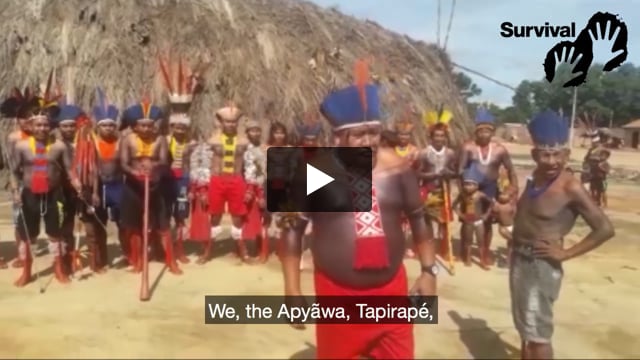Violent protests delay destructive Amazon dams
March 25, 2011

© Clive Dennis/Survival
This page was created in 2011 and may contain language which is now outdated.
The construction of the Madeira dams in the Brazilian Amazon has been delayed, following violent protests at the Jirau dam site last week.
Construction workers reportedly set fire to buildings and more than 40 buses at the site, and ransacked shops and cash-points, in protest against low pay and bad working conditions.
The protests brought the dam construction to a stand still.
The Jirau and Santo Antonio dams, part of the Madeira River hydroelectric complex, will damage vast areas of land, upon which numerous tribal peoples depend for their survival. The Indians did not give their consent for the dams to be built.
Domingos Parintintin of the Parintintin tribe said, ‘We hope that the project will be stopped, because it is our children who will suffer the consequences. They will no longer have enough fish or enough game to feed themselves’.
The uncontacted Indians living in the area are extremely vulnerable as they depend completely on their forest, and they have little resistance to outside diseases, which threaten to drive them to extinction.
A report in the Folha de São Paulo, one of Brazil’s biggest newspapers, warned of an ‘explosion of criminality’ in the area, particularly homicide, sexual exploitation and drug trafficking, as the dam construction has attracted thousands of immigrants. More than 37,000 construction workers are reported to be building the two dams.
This huge wave of immigration is putting pressure on the land and increasing the risks faced by the uncontacted Indians.
French company GDF Suez is leading the consortium building the Jirau dam.



